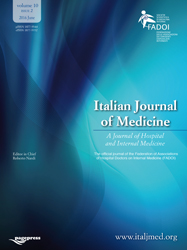Analysis of the risk factors of hepatitis on the rate of recovery in pulmonary tuberculosis patients
All claims expressed in this article are solely those of the authors and do not necessarily represent those of their affiliated organizations, or those of the publisher, the editors and the reviewers. Any product that may be evaluated in this article or claim that may be made by its manufacturer is not guaranteed or endorsed by the publisher.
Authors
Tuberculosis (TB) remains a major public health challenge, particularly in developing countries. Although anti-TB drugs are effective, their use is often associated with drug-induced hepatitis (DIH), which can impact treatment outcomes. Understanding the relationship between DIH risk factors and TB cure rates is critical for improving therapeutic success. This study aims to analyze the risk factors associated with DIH and assess their impact on the cure rate of pulmonary TB patients. A retrospective analytical observational study was conducted at Labuang Baji Hospital and Dr. Wahidin Sudirohusodo Hospital between January and March 2025. Data were collected from pulmonary TB patients who developed DIH between June 2023 and June 2024. A total of 90 subjects were included through total sampling. Demographic, clinical, and treatment variables were analyzed using univariate and bivariate methods with SPSS. Ethical approval was obtained prior to the study initiation. Among the 90 subjects, the mean age was 43.92 years, with 63.3% under 50 years old and 64.4% male. Low body mass index (<18.5 kg/m2) was prevalent in 60% of cases. Comorbidities included diabetes mellitus (21.1%), hypertension (21.1%), and HIV (16.7%). Most TB diagnoses were confirmed bacteriologically (78.9%). DIH occurred on average 8 days after treatment initiation, and 91.1% experienced it within 14 days. Extensive lung lesions were present in 37.8% of patients, and 60% were on a three-drug regimen. A cure was achieved in 80% of subjects, while 20% did not recover. Despite the occurrence of DIH, most TB patients recovered. Early identification of risk factors is important to prevent complications and improve outcomes.
How to Cite

This work is licensed under a Creative Commons Attribution-NonCommercial 4.0 International License.
PAGEPress has chosen to apply the Creative Commons Attribution NonCommercial 4.0 International License (CC BY-NC 4.0) to all manuscripts to be published.






